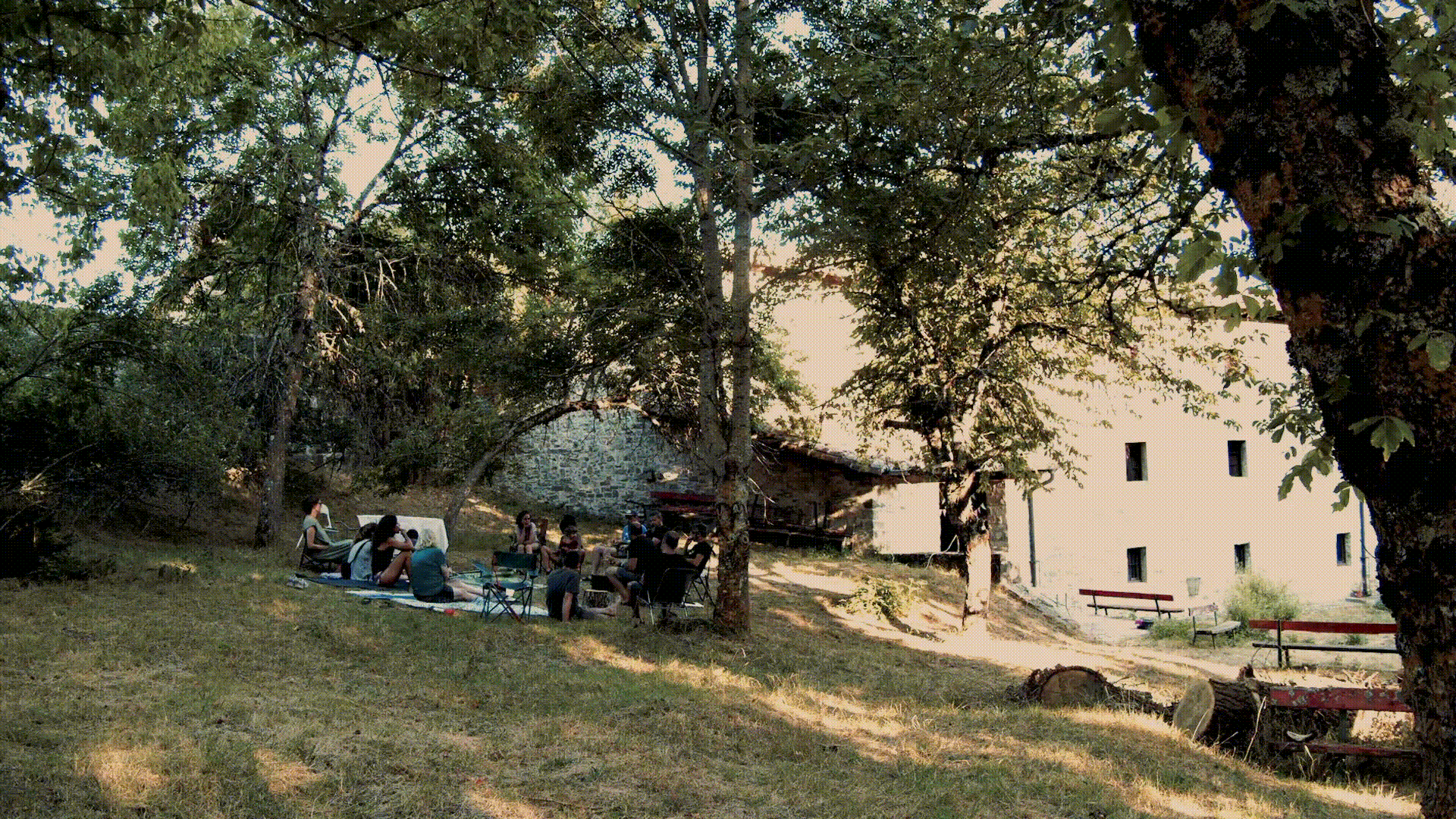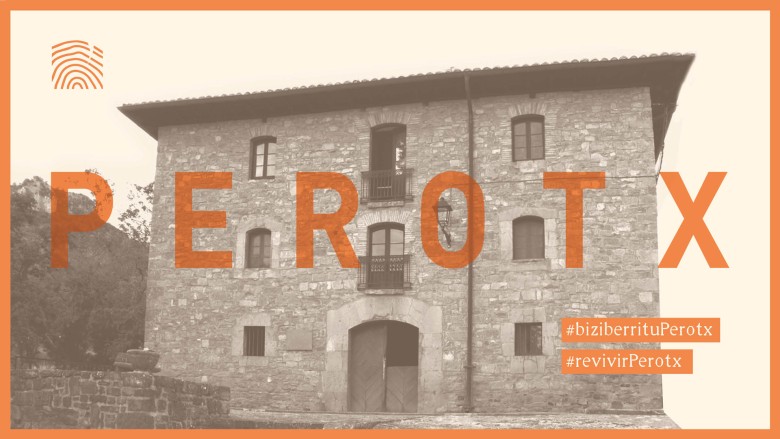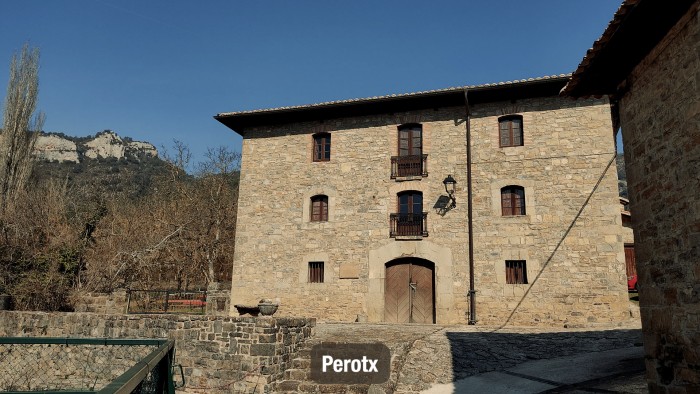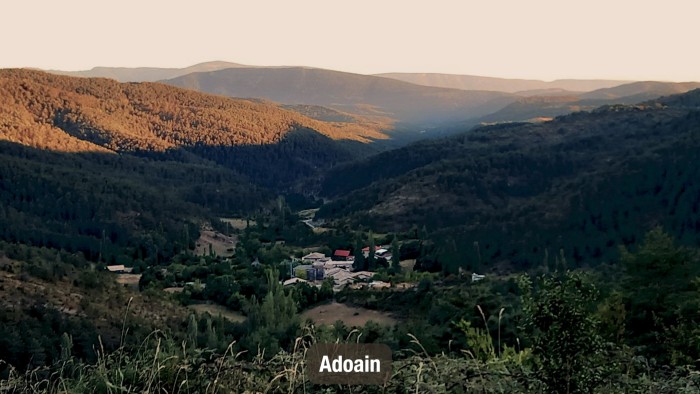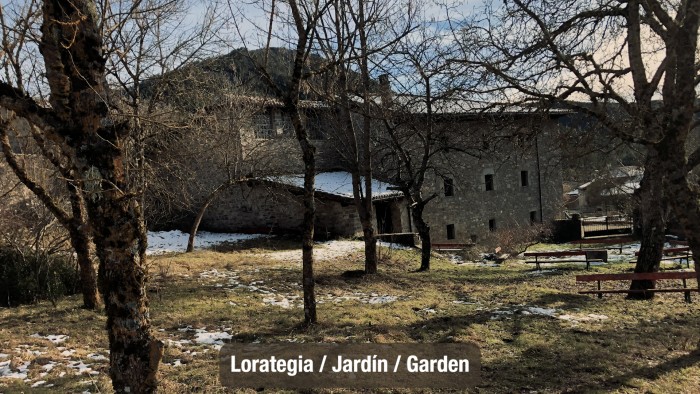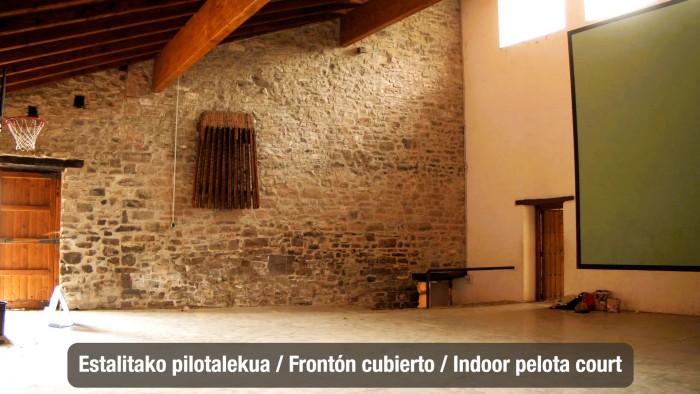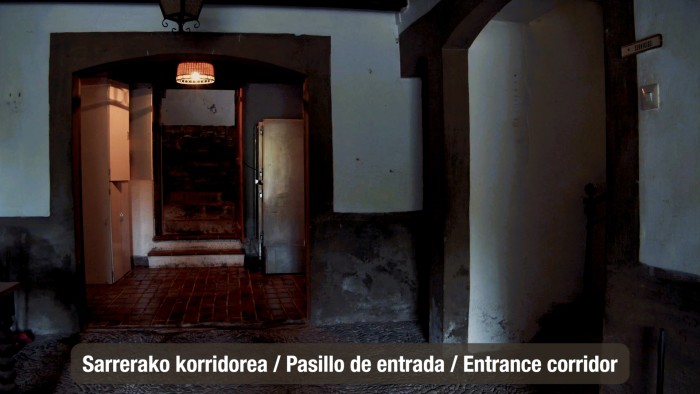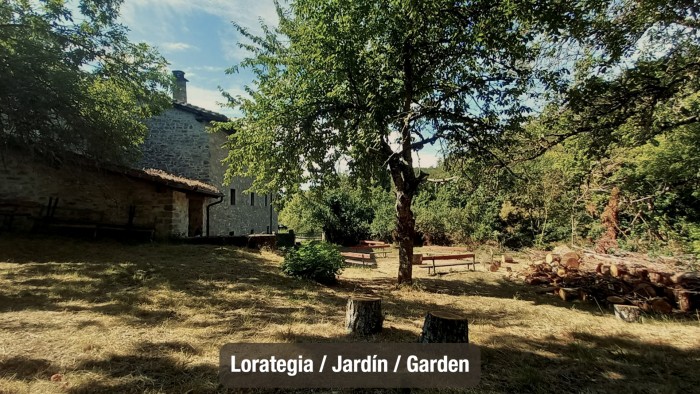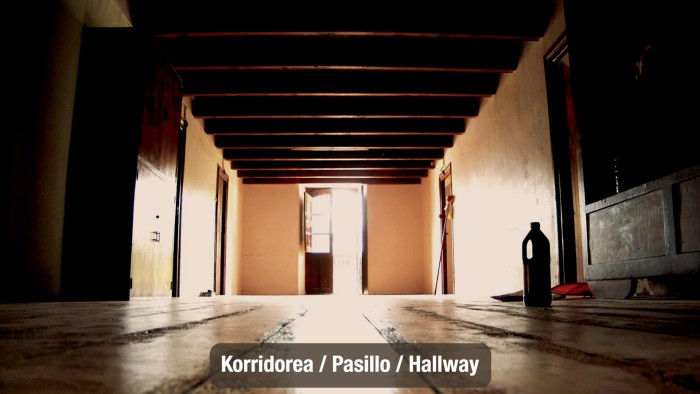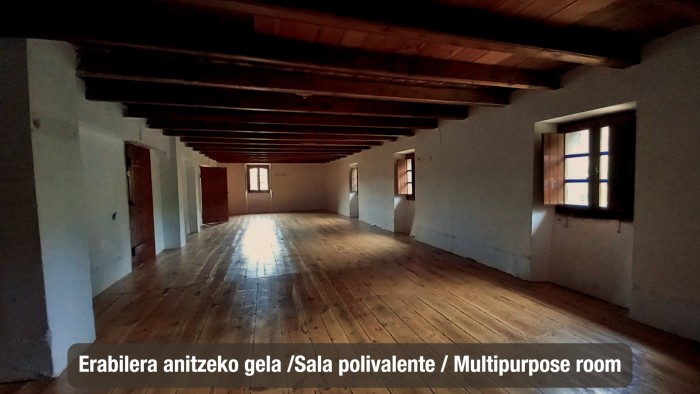Casa Perotx is a historic stone house nestled in the breathtaking Urraúl Alto valley— one of the least populated areas in Navarra. Perotx is located in Adoain, one of the valley’s most remote villages, and home to a single permanent resident: a 93-year-old guardian of the region’s heritage. We refer to Adoain as the “KM0 of depopulation” in Navarra.
This project seeks to breathe new life into a house that has stood abandoned for over two decades. Listed in Navarra’s Register of Cultural Heritage Assets as an “asset of local relevance,” Casa Perotx is being reimagined as a hub for collaboration, research, and creativity—dedicated to addressing rural depopulation and strengthening ties between urban and rural communities. Our forward-thinking vision emphasizes local knowledge recovery, community engagement, and cultural practices to nurture a creative and sustanaible local development.
Main features and goals of the crowdfunding campaign
The restoration of Casa Perotx implies not only a commitment to heritage conservation but also an effort to revitalize the valley’s social fabric by exploring creative models of cooperation and social economy.
Until its closure in 2005, Casa Perotx served as a vibrant gathering place, hosting summer camps, sports activities, and community celebrations—made possible by its covered pelota court. Our primary goal is to restore this communal role, reestablishing Casa Perotx as a space for intergenerational collaboration between visitors, permanent residents and a "floating population"—those who have left the valley but return on weekends or during the summer. We envision it as a hub for community life, key to the cultural and emotional renewal of the area.
However, our vision goes beyond simply restoring past functions. We aim to adapt the space to contemporary needs while complying with regulatory standards, ensuring it is safe, accessible, and environmentally responsible. Casa Perotx will become a welcoming, inclusive environment where people can participate in “creative overflows” with a sense of safety and well-being.
Our approach is grounded in sustainability, emphasizing the use of natural materials and energy-efficient practices that honor both the heritage and rhythms of the valley.
OUR STARTING POINT
We have designed a comprehensive restoration plan in collaboration with Rafael Aristu Alcelay, an architectural firm well-regarded for its work in the valley. We are also grateful for the support of the Department of Rural Development of the Government of Navarra, which has awarded a grant covering 30% of a maximum budget of €200,000 through the PEPAC 2023–2027 initiative. This funding, co-financed by the European Union, amounts to €57,059.91. However, the grant comes with a critical condition: the entire project must be completed by April 2026.
This timeline has added pressure to our efforts and motivated us to launch this crowdfunding campaign, with a goal of raising between €25,000 and €75,000. These funds will reduce our dependence on external financing and strengthen the project's long-term viability.
In parallel, we have already begun to actively engage with the local community. As members of the Ababuru Neighborhood Association, we are involved in community-led initiatives that reflect our commitment to the territory. In 2024, Casa Perotx hosted a communal meal during Adoáin’s summer festivities, reclaiming its historic role as a place for community gathering and celebration.
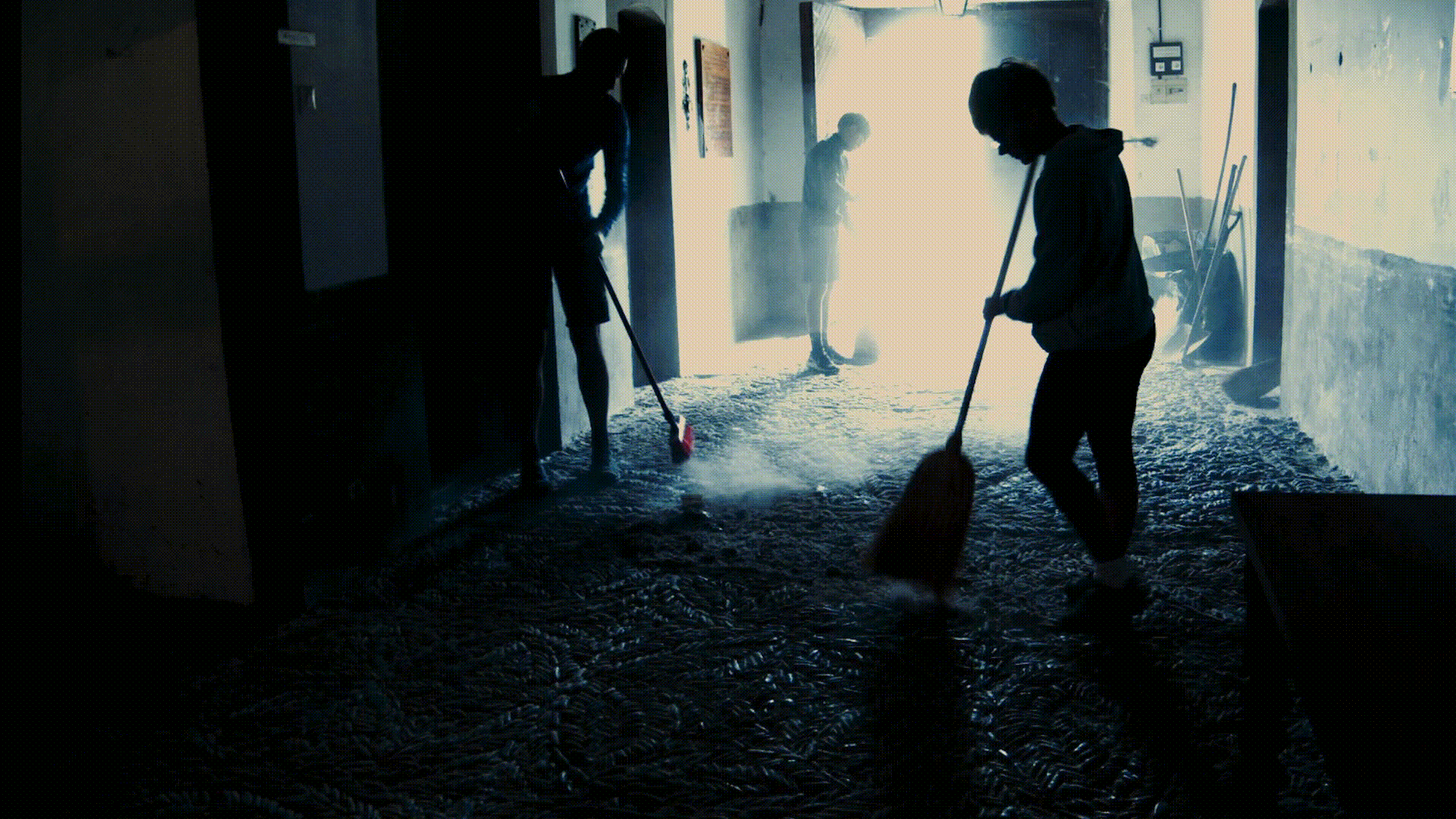
Why this is important
Adoáin: Ground Zero of Depopulated Navarra
The urgent threat of depopulation in Urraúl Alto—recognized by the Government of Navarra and various social stakeholders—is the driving force behind our initiative. A 2021 report on territorial inequalities in Navarra revealed that, although 133 residents are officially registered in the valley, only 60 actually live there. With a staggering population density of just 0.9 inhabitants per square kilometer, Urraúl Alto faces a generational renewal crisis that could lead to its complete disappearance within a few decades.
This critical situation is further exacerbated by a stark gender imbalance. The area has a masculinity index of 189, compared to Navarra’s average of 98, highlighting the disproportionate absence of women. This imbalance strains daily life, weakens care networks, and limits the potential for a diverse, sustainable future. The cycles of depopulation, aging, and masculinization reinforce one another, threatening not only the population itself but also the valley’s cultural heritage and local knowledge.
In response, there is an urgent need to cultivate vibrant, creative initiatives that are rooted in the territory and capable of fostering new ways of living and intervention. Depopulation erases more than just people—it erodes the lived memories and knowledge that could help shape new possibilities for rural resilience.
Committed to social life, culture, and the territory
Beyond financial contributions, this campaign calls on all those committed to cultural sustainability and innovative ways of living to join our effort to build a resilient community. Your support will not only enable the rehabilitation of Casa Perotx but also help shape a common vision for the future.
Casa Perotx is a platform for possibility, rooted in the collaborative work we began in the summer of 2024. Our project, Perotx: Rural Creative Overflows, seeks to strengthen the valley’s social, cultural, and economic fabric—and extend its impact far beyond.
-
We will map both local and external actors to foster meaningful collaborations and produce a situated participatory diagnosis that captures current realities, preserves memory, identifies needs, and imagines possible futures for the valley.
-
We will activate traditional knowledge and community memory through documentation and rural imagination, with particular emphasis on making women’s experiences and aspirations visible.
-
We will establish an ongoing program of artist residencies and cultural activities, transforming Casa Perotx into a bridge between rural and urban creativities.
-
We will offer community-based training in creative and communication tools, empowering valley residents to tell their own stories and reclaim visibility for rural life.
-
Above all, we aim to create a hub for community experimentation—a place that evolves organically and invites us to imagine and practice new ways of living and creating together.
We invite those inspired to confront depopulation through creativity and community-driven approaches to join us. Our initiative recognizes the value of rural memory and knowledge as vital resources for rethinking life far beyond the valley.
Reviving, restoring, repopulating
We are looking for engaged individuals seeking sustainable, humane alternatives to urban living, and who view rural areas as fertile ground for imagination, collaboration, and renewal. We also welcome those who may never set foot in Casa Perotx but wish to support initiatives with deep territorial and cultural relevance.
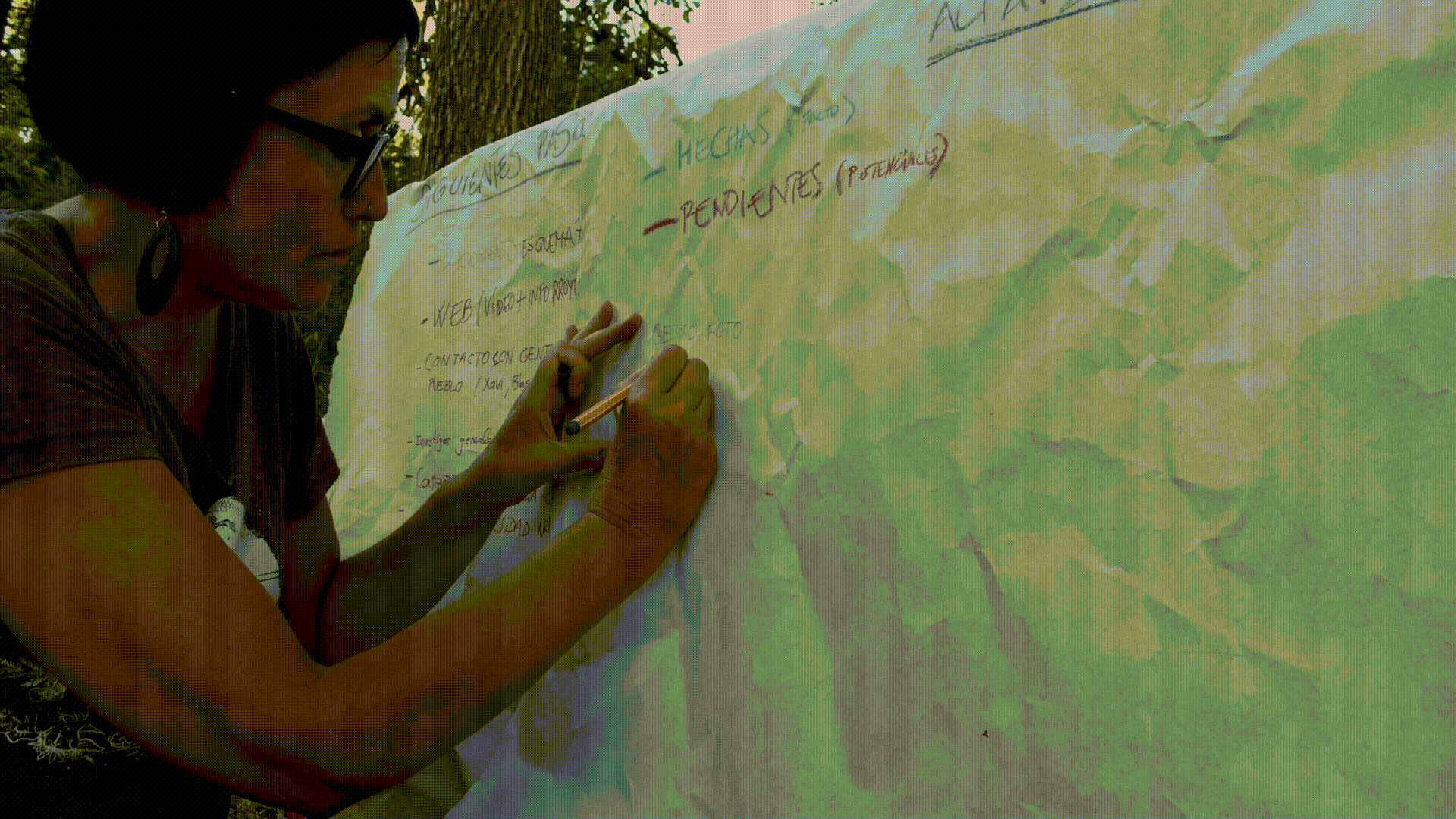
Team and experience
The story of Perotx began in November 2023, when Iñigo Martínez Monasterio discovered that the Government of Navarra was auctioning Casa Perotx. Motivated by a deep connection to the valley, Iñigo rallied a group of friends to bid on the property. Against all odds, they succeeded through their bio-entrepreneurship initiative, Azpikari, and the formation of the micro-cooperative Pardixe Erangintza. This marked the beginning of the restoration of a property abandoned for two decades—and the rise of new local actors capable of revitalizing the valley’s economy.
In the summer of 2024, Perotx took its first steps with a diverse, multilingual group of individuals from Navarra and beyond, united by a shared commitment to reimagining life in the Upper Urraúl Valley and inspiring others to do the same.
Our team consists of multidisciplinary professionals with strong backgrounds in social research, community engagement, and collective action—including university educators, filmmakers, cultural managers, and social entrepreneurs.
Perotx is built around four participatory layers: a core cooperative group, a non-profit socio-cultural association (currently in formation), a network of collaborators from local and regional organizations, and—most importantly—the valley’s residents, who are at the heart of our mission.
